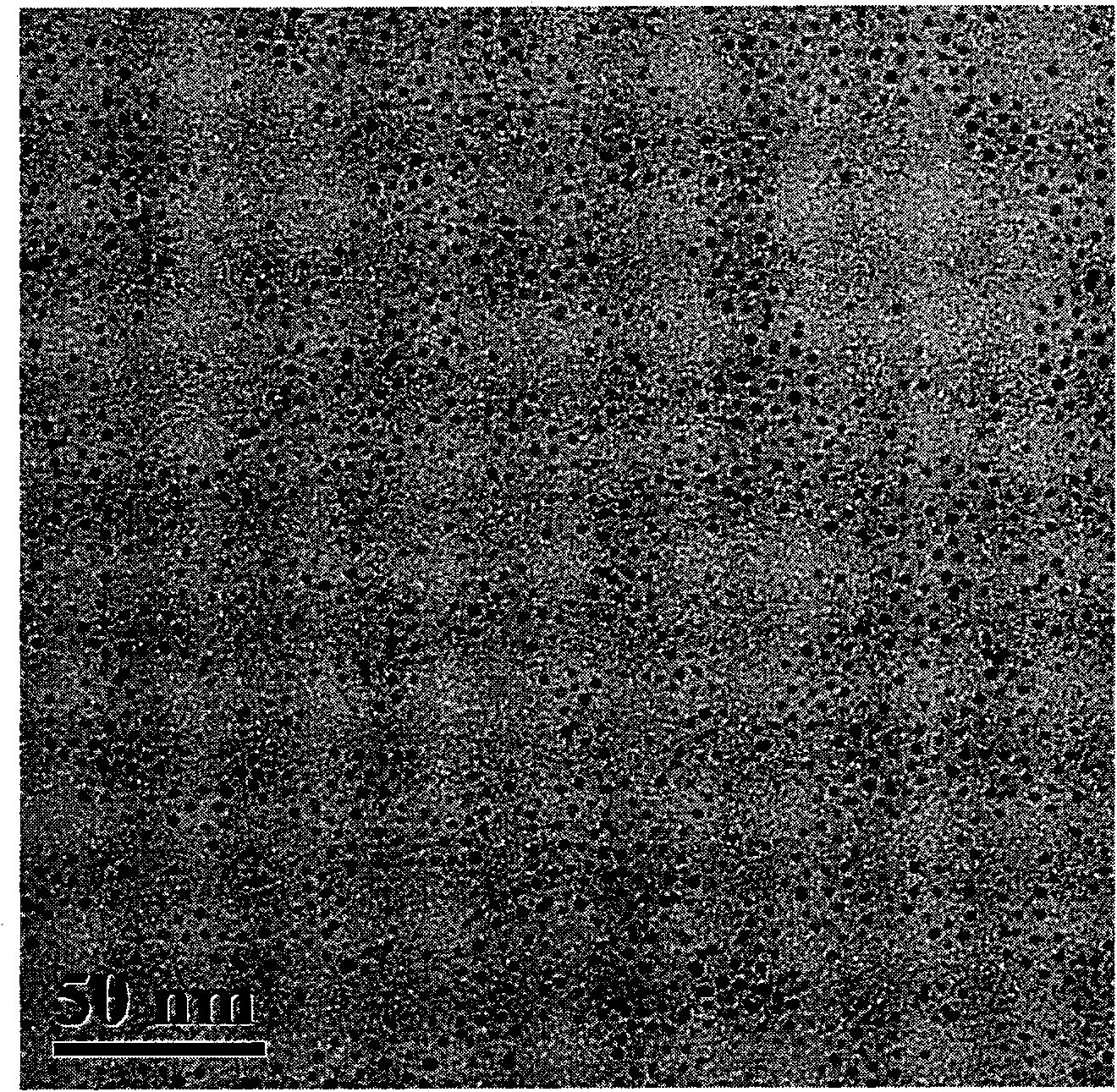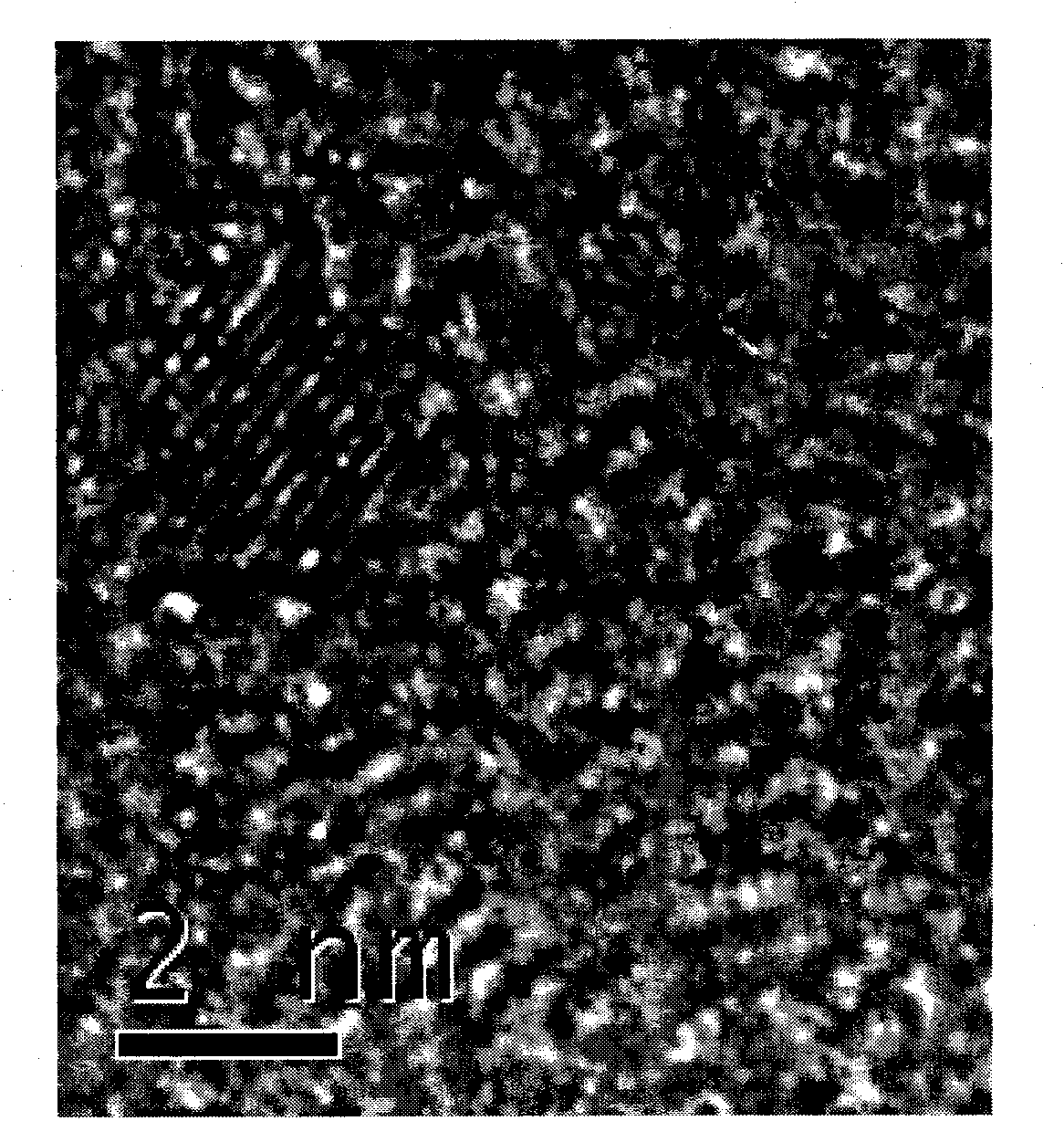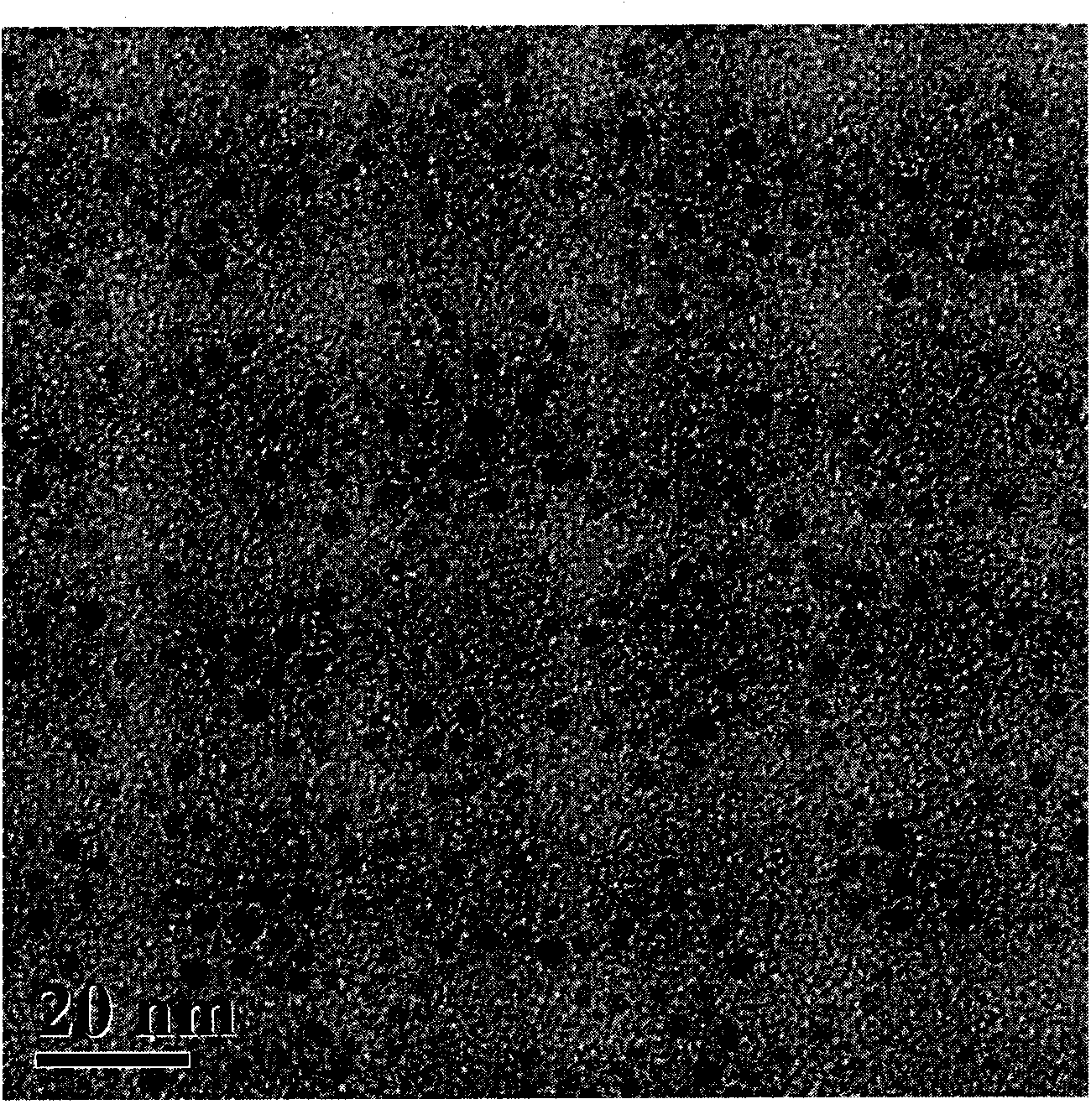Method for preparing high-dispersion precious metal and alloy nanoparticles thereof
A technology of alloy nanoparticles and precious metals, which is applied in the field of preparation of precious metal alloy nanoparticles, can solve problems such as small applicability, difficult centrifugation, and difficult control of components, and achieves a small particle size distribution range, convenient process, and low cost. Effect
- Summary
- Abstract
- Description
- Claims
- Application Information
AI Technical Summary
Problems solved by technology
Method used
Image
Examples
Embodiment 1
[0031] Take 50 mL of ethylene glycol and add it into a three-necked flask, then add 0.5 mL of oleic acid and oleylamine, and stir and mix evenly at room temperature under an inert atmosphere such as argon. Weigh 0.5mmol of copper acetate and dissolve in 5mL of ultrapure water, weigh 0.5mmol of palladium acetate and dissolve in 5mL of acetone solution, add the two solutions into the mixed solution of ethylene glycol, and then heat up to 120 ℃, keep the temperature for 30 minutes, then continue to heat up to 200 ℃, keep the temperature here for 90 minutes. After the reaction was completed, it was naturally cooled to room temperature, then 50 mL of n-hexane was added, and the mixture was transferred to a separatory funnel for static separation. Take the upper layer solution and remove n-hexane in a rotary evaporator to obtain a viscous nanoparticle solution. Then add ethanol and a small amount of normal hexane to wash, centrifugal drying obtains average particle diameter at 1.9 ...
Embodiment 2
[0033]Take 50 mL of ethylene glycol and add it into a three-necked flask, then add 1 mL of oleic acid and oleylamine, and stir and mix evenly at room temperature under an inert atmosphere such as argon. Weigh 0.5mmol of copper acetate and dissolve in 5mL of ultrapure water, weigh 0.5mmol of palladium acetate and dissolve in 5mL of acetone solution, add the two solutions into the mixed solution of ethylene glycol, and then heat up to 120 ℃, keep the temperature for 30 minutes, then continue to heat up to 200 ℃, keep the temperature here for 90 minutes. After the reaction was completed, it was naturally cooled to room temperature, then 50 mL of n-hexane was added, and the mixture was transferred to a separatory funnel for static separation. Take the upper layer solution and remove n-hexane in a rotary evaporator to obtain a viscous nanoparticle solution. Then add ethanol and a small amount of normal hexane to wash, centrifugal drying obtains average particle diameter at 3 nanom...
Embodiment 3
[0035] Take 50 mL of ethylene glycol and add it into a three-necked flask, then add 1 mL of oleic acid and oleylamine, and stir and mix evenly at room temperature under an inert atmosphere such as argon. Weigh 0.5mmol of copper acetate and dissolve in 5mL of ultrapure water, weigh 0.5mmol of palladium acetate and dissolve in 5mL of acetone solution, add the two solutions into the mixed solution of ethylene glycol, and then heat up to 120 ℃, keep the temperature for 30 minutes, then continue to heat up to 200 ℃, keep the temperature here for 90 minutes. After the reaction was completed, it was naturally cooled to room temperature, then 50 mL of n-hexane was added, and the mixture was transferred to a separatory funnel for static separation. Take the upper layer solution and remove n-hexane in a rotary evaporator to obtain a viscous nanoparticle solution. Then add ethanol and a small amount of normal hexane to wash, centrifugal drying obtains average particle diameter at 4 nano...
PUM
| Property | Measurement | Unit |
|---|---|---|
| particle diameter | aaaaa | aaaaa |
| particle size | aaaaa | aaaaa |
| particle size | aaaaa | aaaaa |
Abstract
Description
Claims
Application Information
 Login to View More
Login to View More - R&D
- Intellectual Property
- Life Sciences
- Materials
- Tech Scout
- Unparalleled Data Quality
- Higher Quality Content
- 60% Fewer Hallucinations
Browse by: Latest US Patents, China's latest patents, Technical Efficacy Thesaurus, Application Domain, Technology Topic, Popular Technical Reports.
© 2025 PatSnap. All rights reserved.Legal|Privacy policy|Modern Slavery Act Transparency Statement|Sitemap|About US| Contact US: help@patsnap.com



